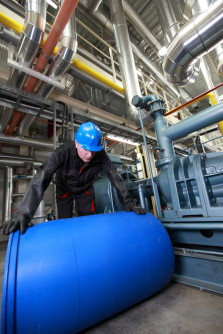 When you envision hazardous waste, do you think of oozing liquids that are covered with cross-bone and skull stickers? This sort of image can definitely fall within the hazardous waste category. However, almost any manufacturing process or industry can create hazardous waste.
When you envision hazardous waste, do you think of oozing liquids that are covered with cross-bone and skull stickers? This sort of image can definitely fall within the hazardous waste category. However, almost any manufacturing process or industry can create hazardous waste.
There are other kinds of hazardous waste that you might not realize are dangerous to our environment or health. What about pesticides? Most people are aware of that one. Gasoline? It is also considered to be hazardous. Even old computers are viewed as hazardous.
5 Kinds Of Hazard Waste And How To Properly Handle Them
Below we break down hazardous waste into five main categories and provide advice on the best ways to handle and dispose of these materials.
1. Listed Waste
Specific wastes have been determined to be hazardous by the EPA and it has three lists published that classify listed waste.
F-List
This list contains wastes that are created by common industrial and manufacturing processes. Since multiple industries produce these lists they are referred to as “non-specific source waste” by the EPA.
K-List
These are wastes, including wastewater or sludge, from certain industries, including pesticide manufacturing or petroleum refining, that are included on the list. These are referred to as “source-specific wastes since we know which industries produce them.
U-list and P-list
These are commercial chemical products on these lists that are discarded in unused form. When discarded, they become hazardous.
2. Characterized Waste
There are many other types of waste materials that are not included in the listed wastes above. Those materials may be considered to be hazardous if they meet one or multiple characteristics that are outlined for hazardous waste.
Ignitability
Under certain conditions, they create fire, or have a flashpoint under 140F (60C), or are spontaneously combustible.
Corrosivity
Bases or acids that corrode containers, drums, and metal tanks. They have a pH of equal to 2 or less than 2 or equal to or greater than 12.5.
Reactivity
Under normal conditions, these are wase materials that are unstable. They may cause vapors, gases, toxic fumes, or explosions if mixed with water, compressed, or heated.
Toxicity
Toxic materials may be lethal or harmful if they are absorbed or ingested. When they placed in landfills, toxicity may contaminate groundwater and be absorbed by the ground.
3. Universal Waste
These are very hazardous waste. However, the category is made up of very common materials, with many of them being found around households. This category specifically includes:
- Lamps that contain mercury
- Equipment that contains mercury
- Pesticides
- Batteries
4. Mixed Waste
These waste materials contain both hazardous and radioactive components. Most waste that is commercially generated is low-level mixed wastes that contain low levels of radioactive waste. These wastes can be generated by many different industries, including energy, nuclear, pharmaceutical, medical, and other industries.
5. E-Waste
One hazardous waste category that continues to grow is e-waste or electronic or electrical waste. It includes old toasters, coffee makers, refrigerators, TVs, printers, and old computers. Many of the components are hazardous due to changes throughout the manufacturing process.
How to Properly Handle Hazardous Waste
If your business generates hazardous waste, you are required to take the following steps:
Identify each of the hazardous wastes that are generated by your company
Count up the total weight of hazardous materials produced by your company each month. You will fall into one of the following three categories:
- Conditionally Exempt Small Quantity Generator (under 100 kilograms)
- Small Quantity Generator (100 to 1,000 kilograms)
- Large Quantity Generator (over 1,000 kilograms)
If you are a small or large quantity generator, you must notify the EPA and your state agency of your hazardous waste activities.
Your hazardous waste categories must be managed according to the specific regulations for each of the categories.
Arrange for the materials to be transported from your site to a waste management facility, and include the proper reports and forms.



